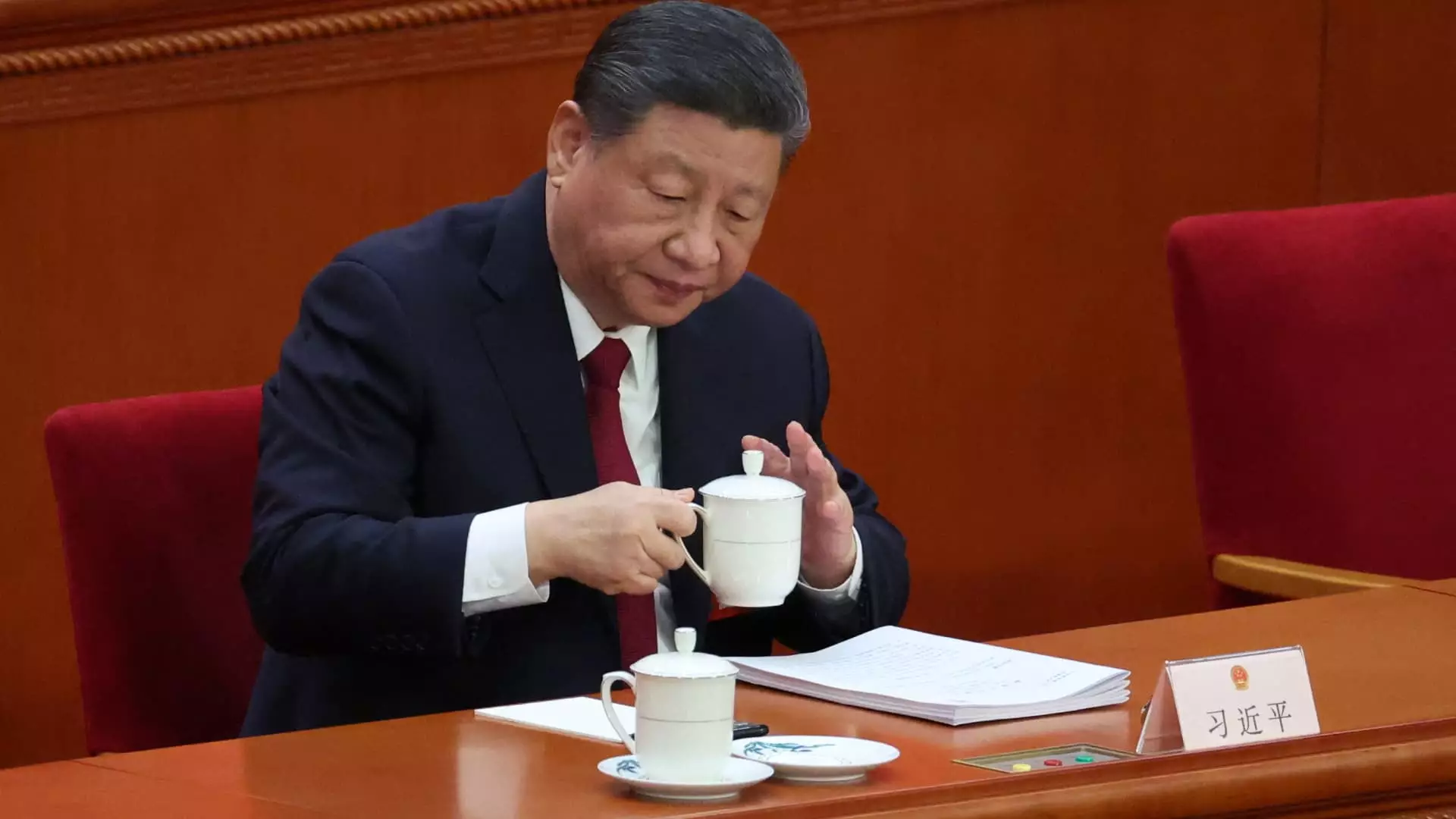In recent weeks, China’s economic stance has come under significant scrutiny as external pressures have mounted. President Xi Jinping convened a pivotal meeting of the Politburo, highlighting the government’s commitment to aid struggling businesses. This intention is primarily driven by escalating tensions with the United States, which have led to a flurry of retaliatory tariffs. This environment has compelled major financial institutions to downgrade their GDP forecasts for China, now grappling with a daunting challenge: achieving a growth target of “around 5%” initially proposed earlier in the year.
This moment is a stark reminder of the complexities surrounding the Chinese economy, where growth ambitions must compete with the harsh realities of international relations. It seems that the Communist Party is acknowledging that previously unassailable growth paradigms might need reevaluation and modification in light of external shocks that threaten domestic stability.
Strategic Flexibility as a Guiding Principle
Key components of the latest government strategy include more nuanced fiscal policies and targeted financial support for key industries. Adjustments in interest rates and the reserve requirement ratio signify a proactive approach to maintaining economic fluidity. The notion of “timely reduction” suggests an understanding that flexibility is paramount in response to unpredictable externalities. Zong Liang, a leading economist at the Bank of China, indicates that the government is poised to conduct meticulous research on businesses that are bearing the brunt of new economic pressures.
This stance illustrates a complicated balancing act; while there is clear resolve to support struggling sectors, there is also caution against overcommitting resources. This careful calibration reflects a government that, rather than rushing into a broad-stroke stimulus, prefers a more graduated approach that probes specific industry needs. In this context, the Politburo’s approach can be seen as not merely reactive but as an evolving framework that anticipates future changes and engages with them strategically.
Domestic Focus: A Shift in Economic Strategy
Notably, the recent initiatives emphasize domestic consumption as a counterbalance to the impacts of external conflict. There is a concerted effort to enhance the income of middle and lower-income groups—a demographic that, historically, has been more vulnerable to global economic fluctuations. By aiming to boost consumption from within, China appears to be pivoting towards a more sustainable economic model that is less reliant on exports.
This makes sense not only within the context of current geopolitical climate but also in recognizing that a robust domestic market can serve as a buffer against international economic shocks. The call for tech development, particularly in AI, further underscores a long-term vision that seeks to innovate and diversify beyond traditional manufacturing and export-oriented growth.
Policy Insights from the Politburo’s Summation
The content emerging from the Politburo’s readout is both revealing and suggestive of broader ideological shifts within Chinese governance. Bruce Pang, an associate professor at CUHK Business School, pointed out the lack of “unexpected surprises” in the policies proposed. Yet, amid this apparent lack of novelty, there resides comfort in stability. The emphasis on policy continuity, combined with high-level inter-agency collaboration, suggests a cohesive strategy that is aimed at navigating turbulent waters rather than embarking on radical reforms.
The expectation of new legislation to support the private sector adds another layer of optimism. It indicates a formal acknowledgment of the role that private enterprise plays within China’s economy. There is a tacit understanding that creating an environment conducive to business is essential for fostering long-term resilience. In a landscape fraught with organized pressure, maintaining a vibrant private sector becomes all the more pivotal.
A Future Defined by Adaptation
Overall, these recent developments indicate a profound transition within China’s economic policy landscape. The government’s adaptability and responsiveness to external shocks signal a strategic deviation from historical practices, aiming to fortify internal economic health against external volatility. This nuanced response showcases a recognition that modern economic challenges are complex and multifaceted, and that simplistic solutions will no longer suffice. The emphasis is not merely on overcoming immediate challenges but on laying the groundwork for a more resilient economic future. As China navigates these challenges, it faces an intriguing opportunity to redefine its growth narrative for the years ahead amidst rising uncertainties.

